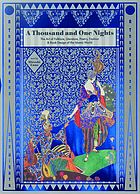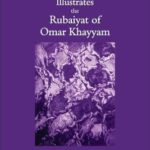Vedder’s drawings for Omar Khayyám’s Rubáiyát. The Atlantic Monthly, 55 (1885) 327 (January), pp. 111–116.
Archives
Vedder’s accompaniment to the Song of Omar Khayyám
Vedder’s accompaniment to the Song of Omar Khayyám. Scudder, H.E. The Century Magazine, 29 (1884) 1 (November), pp. 3-9
Intersemiotic translations of Rubaiyat of Omar Khayyam by Iranian and Thai illustrators: a comparative study
Intersemiotic translations of Rubaiyat of Omar Khayyam by Iranian and Thai illustrators: a comparative study. Saber Atash Nazarloo, Hossein Navidinia.
Asia Pacific Translation and Intercultural Studies, 5 (2018) 1, p.p. 72-81.
A Thousand and One Nights. The art of folklore, literature, poetry, fashion & book design of the Islamic world
A Thousand and One Nights. The art of folklore, literature, poetry, fashion & book design of the Islamic world. Hiroshi Unno. Tokyo, Pie Books, 2016. 295 p. ISBN: 978-4-7562-4816-9.
Summary:
Middle Eastern literature and poetry, including Arabian Nights and Rubaiyat of Omar Khayyam, has captured the imaginations of European people with its mysterious atmosphere and tales of exotic lands. From the 18th to the early 20th century, various European editions of these stories were published that included imaginative illustrations by notable European illustrators such as Nielsen, Dulac, Pogány, Bull and others. This book is a visual art collection of the world featured in such European illustrations and introduces the ancient Islamic manuscripts and art on which the illustrations are based. Text in Japanese, with an introduction and captions in English.
Orlando Greenwood illustrates the Rubaiyat of Omar Khayyam
Orlando Greenwood illustrates the Rubaiyat of Omar Khayyam. Danton O’Day. [S.l.], Blurb, 2021. [48 p.] 9 illustrations ; 23 x 15 cm. ISBN: 9781034492504.
Orlando Greenwood (1892-1989) was a brilliant, talented artist, who already at the age of 21-22 felt strongly attracted by the verses of Omar Khayyám. His illustrations to the Rubáiyát were recently discovered and presented in this book by Danton O’Day for the first time. The nine illustrations are included in the text of FitzGerald’s first version.

